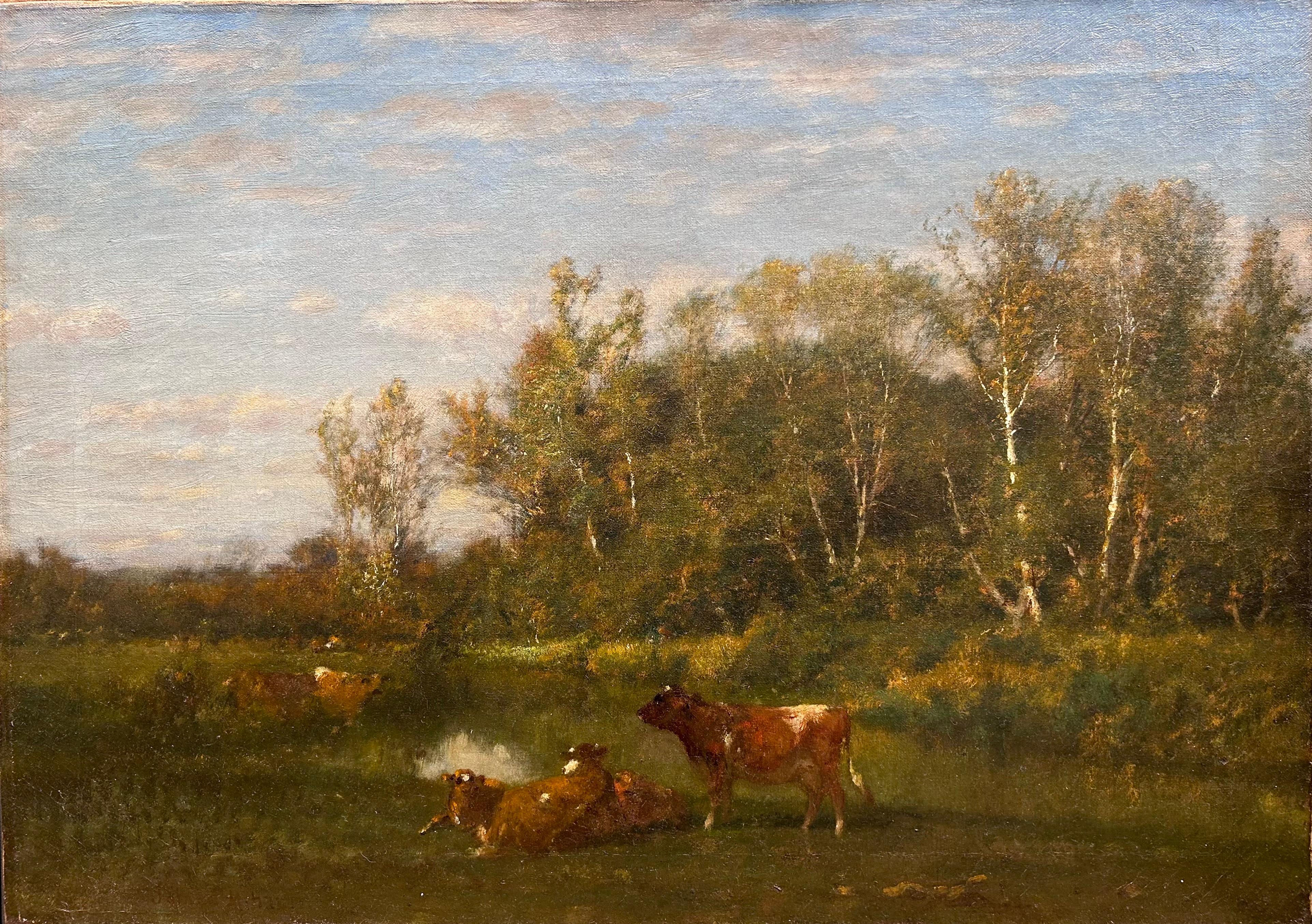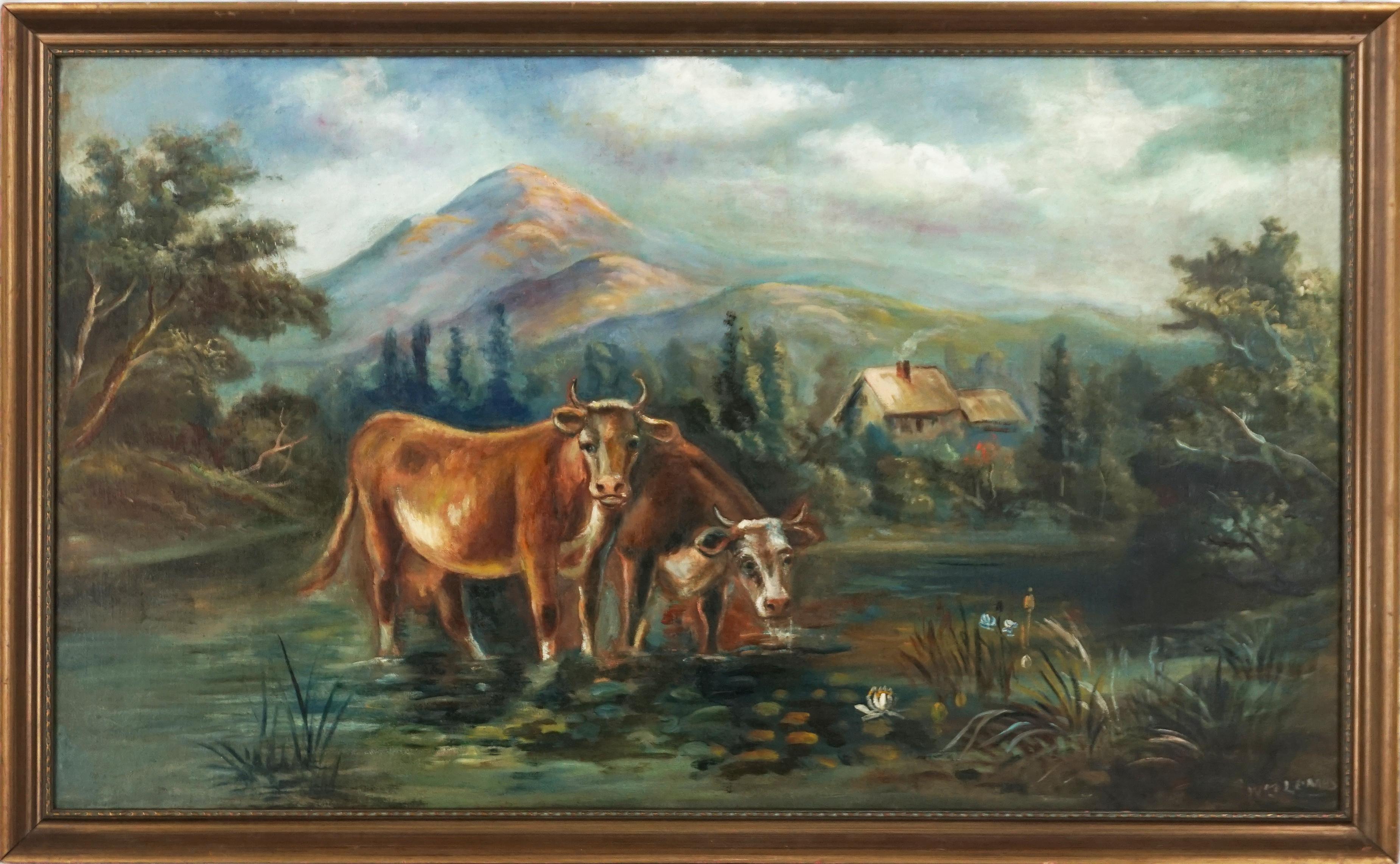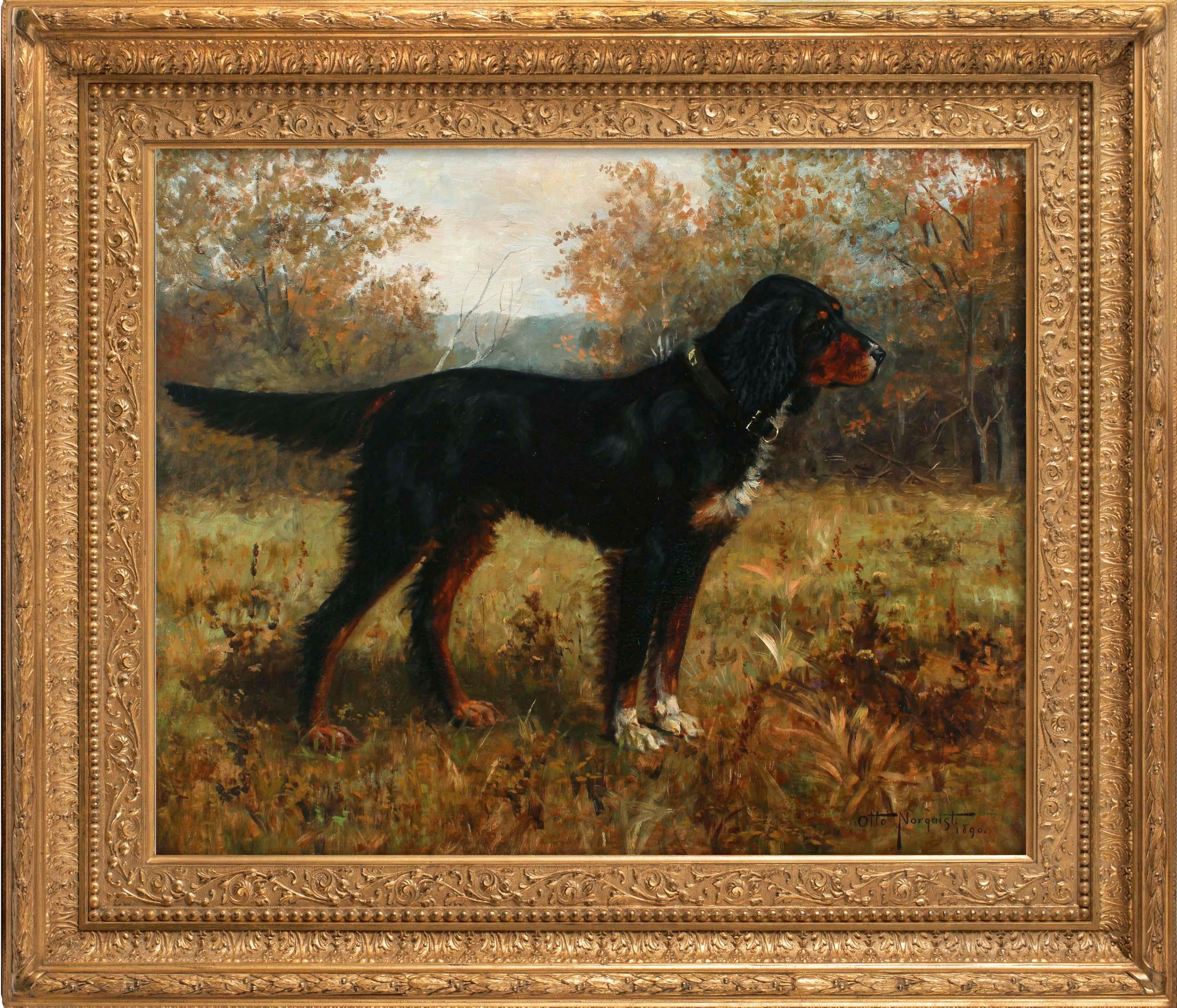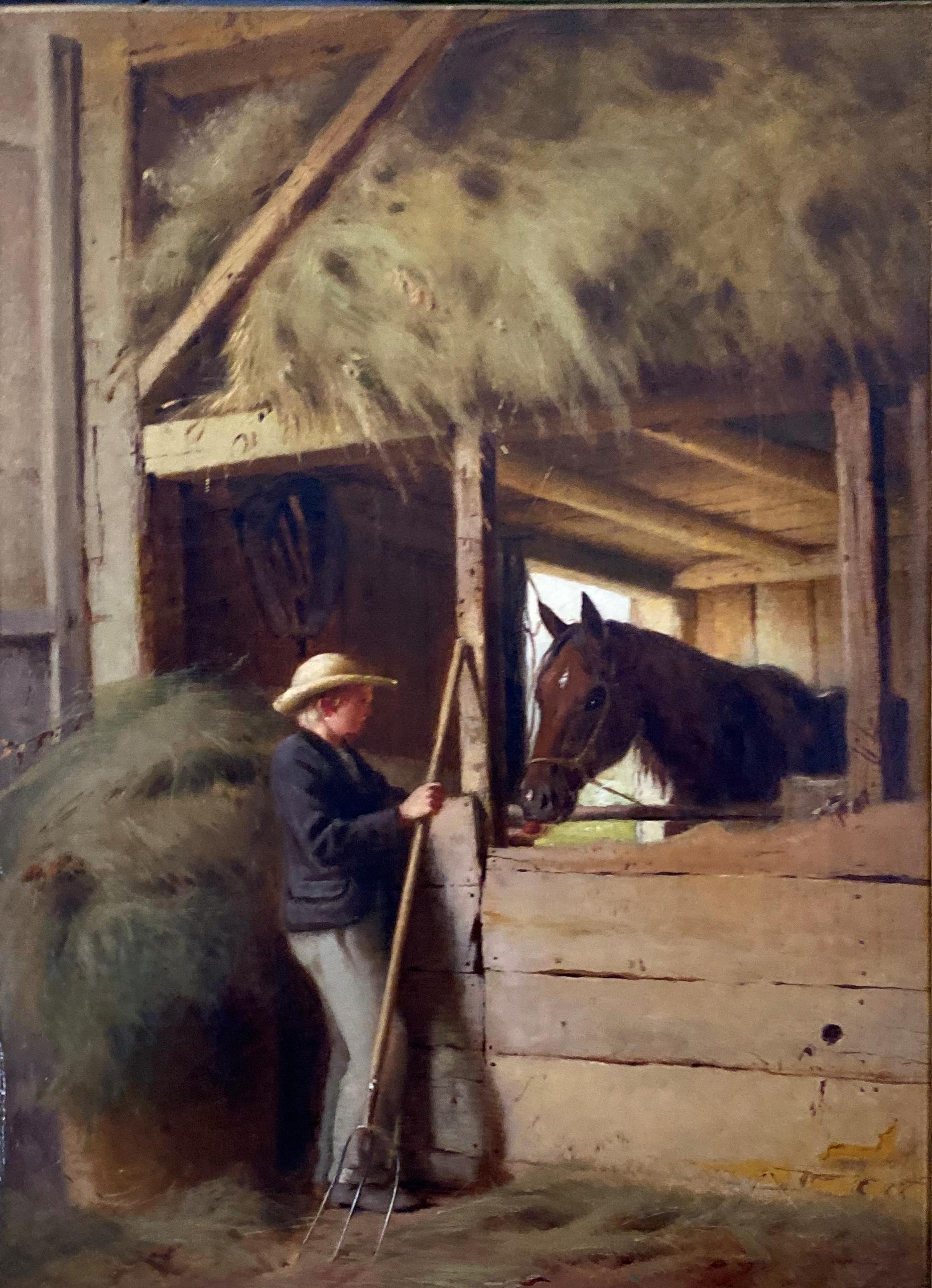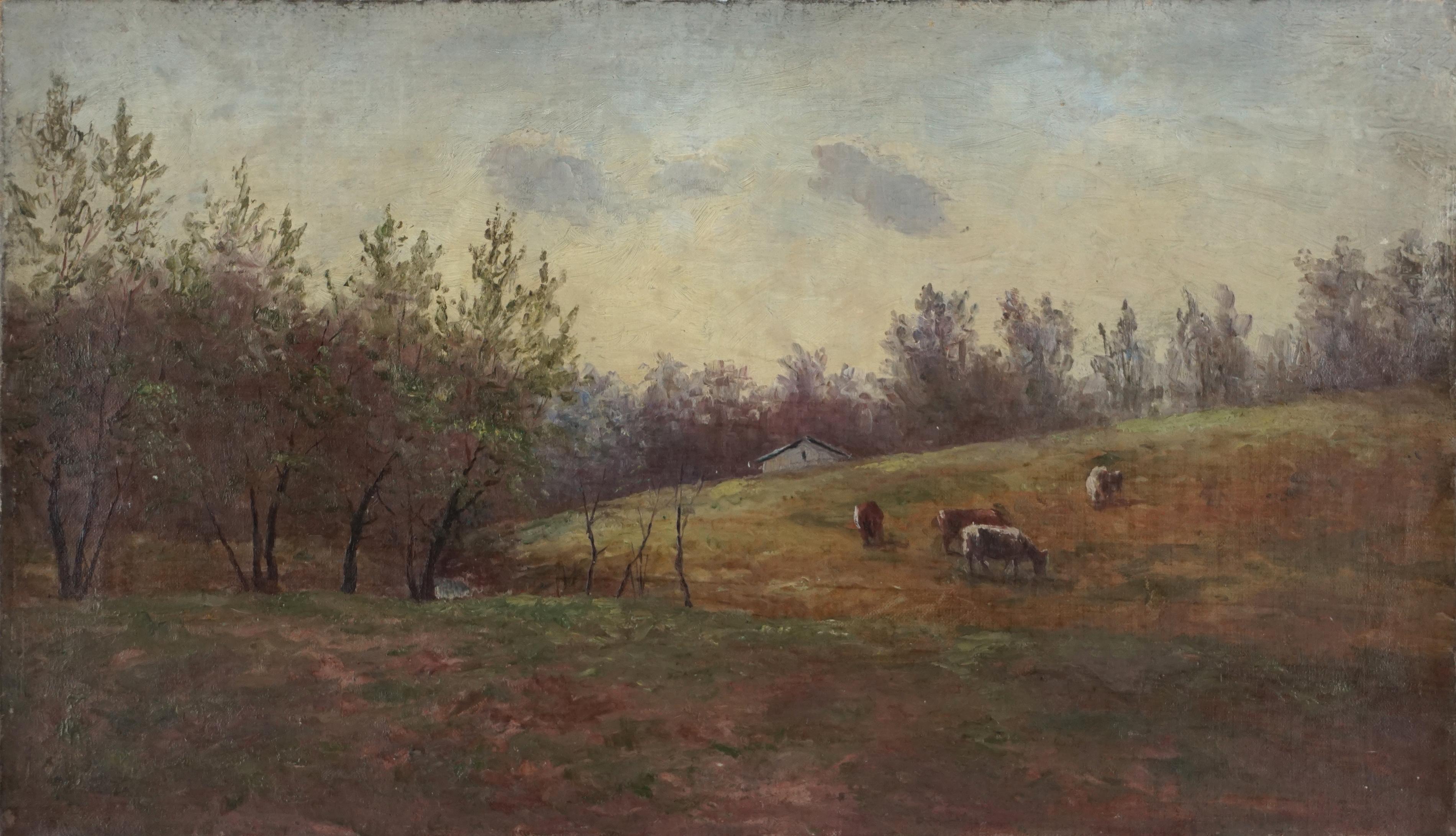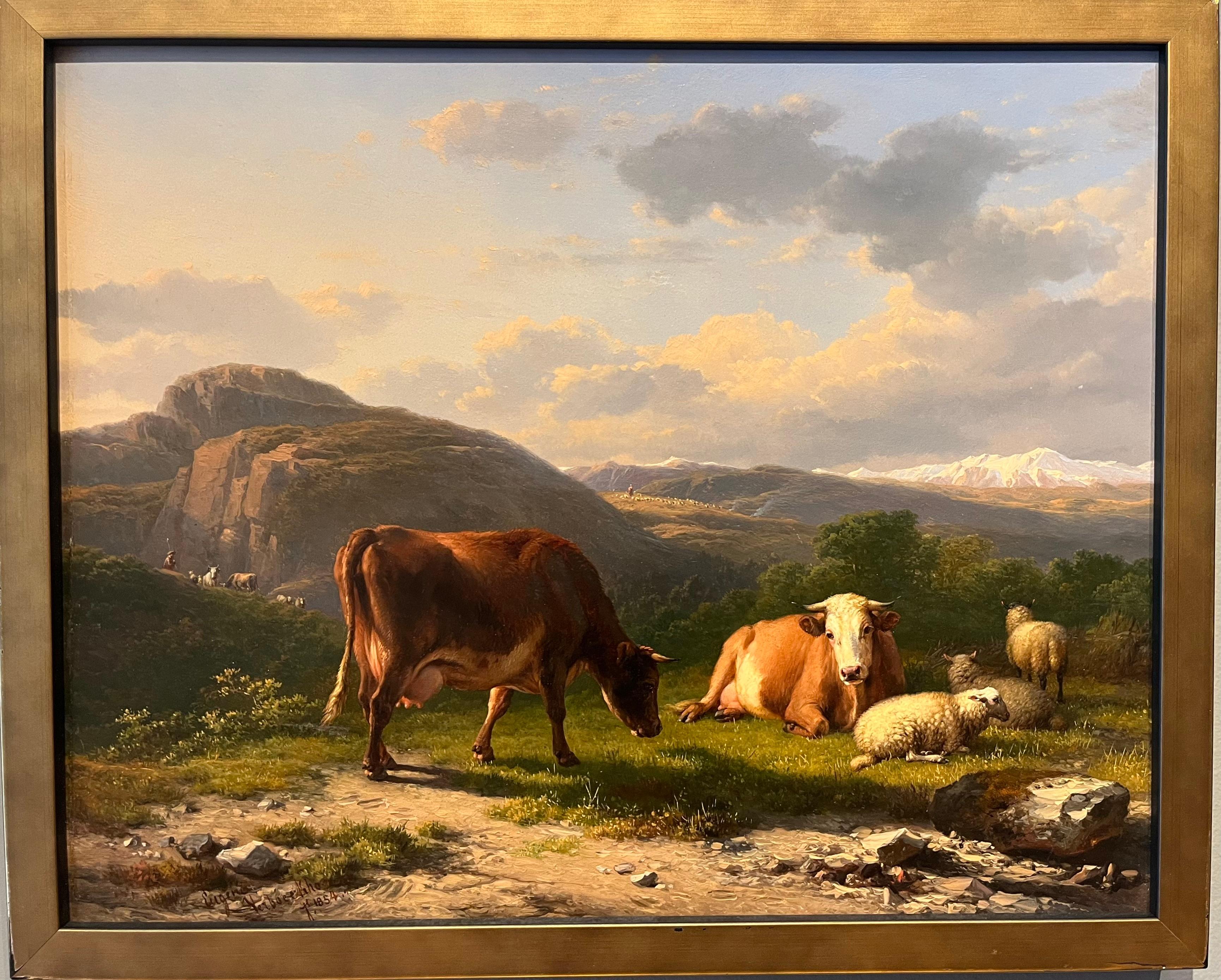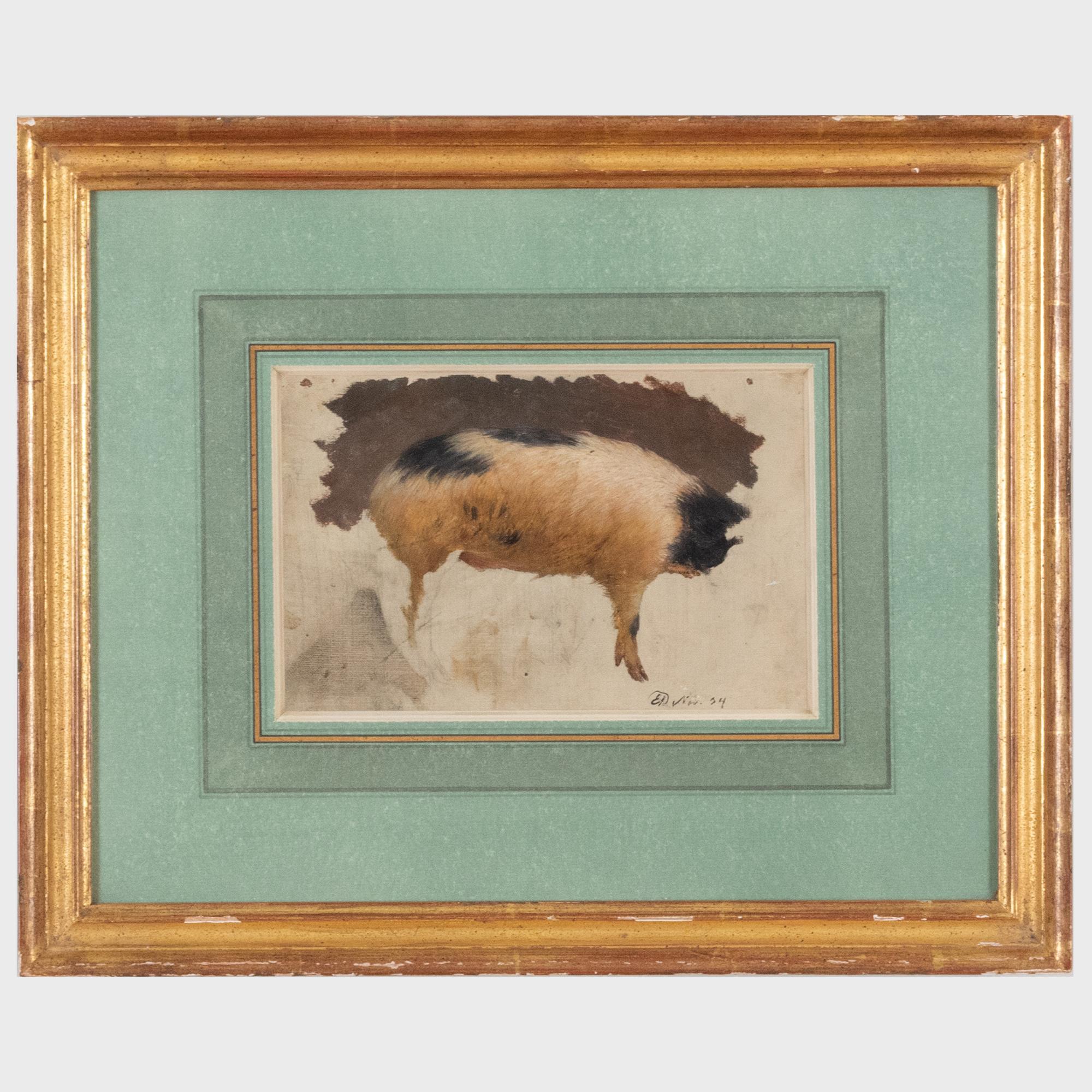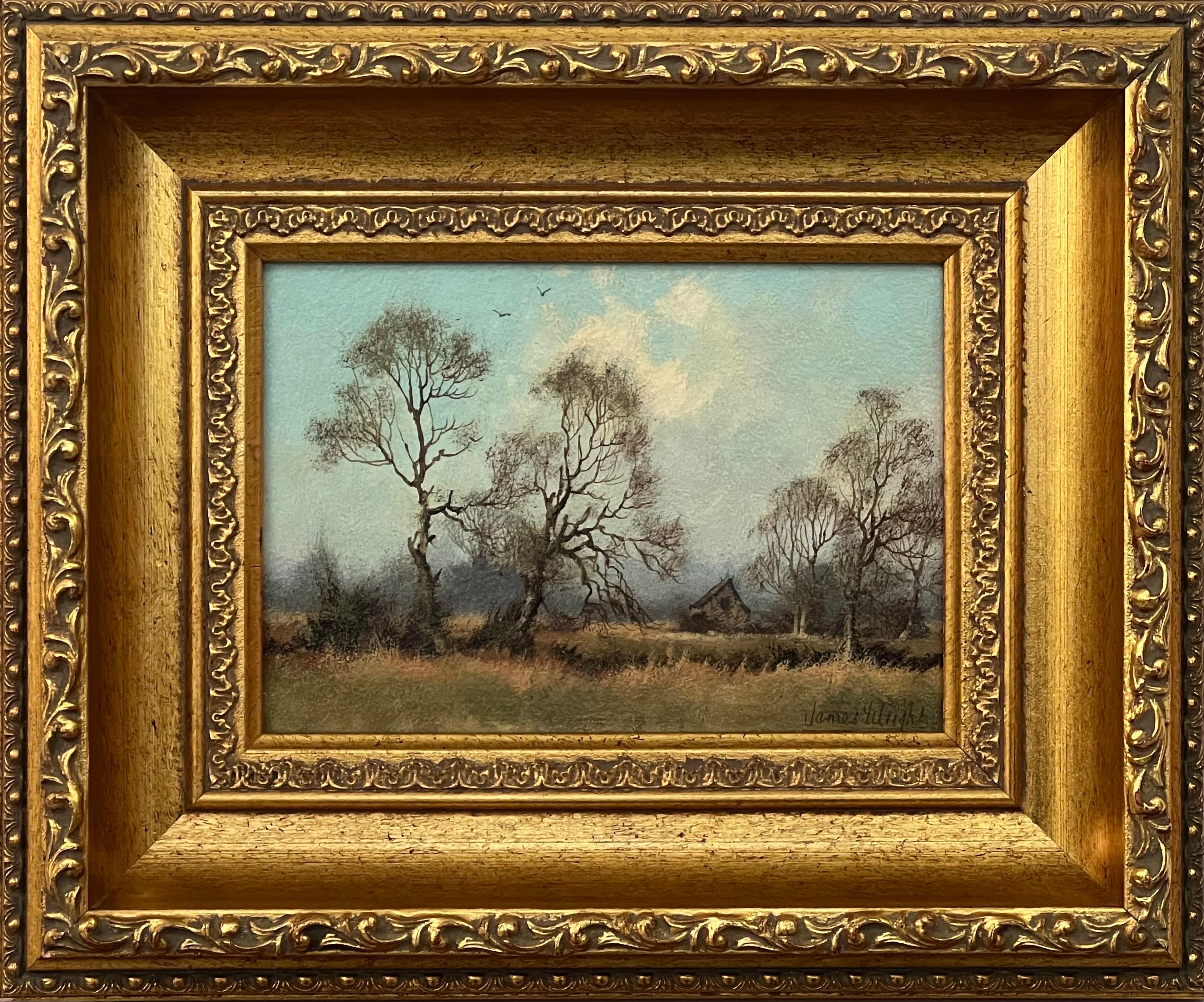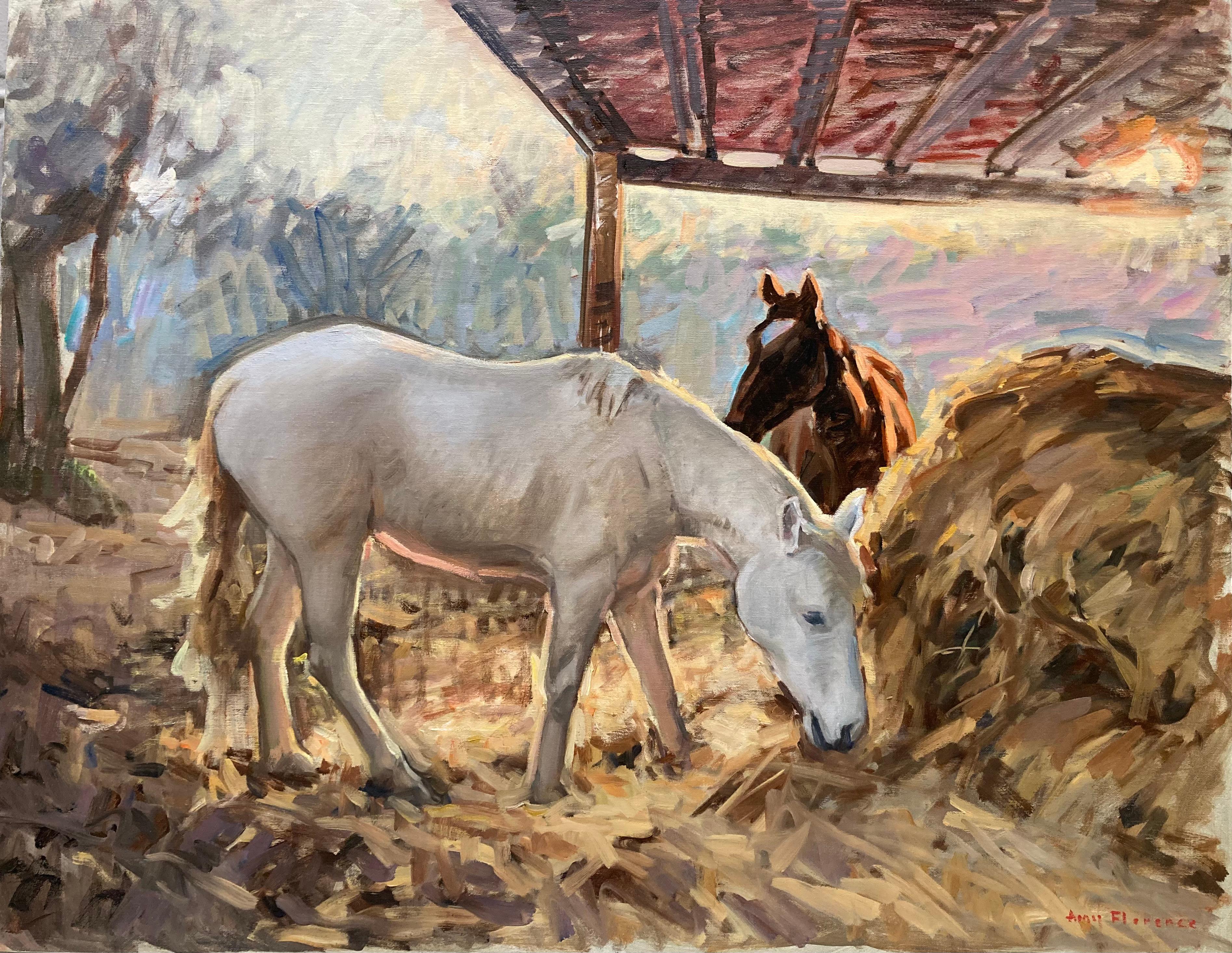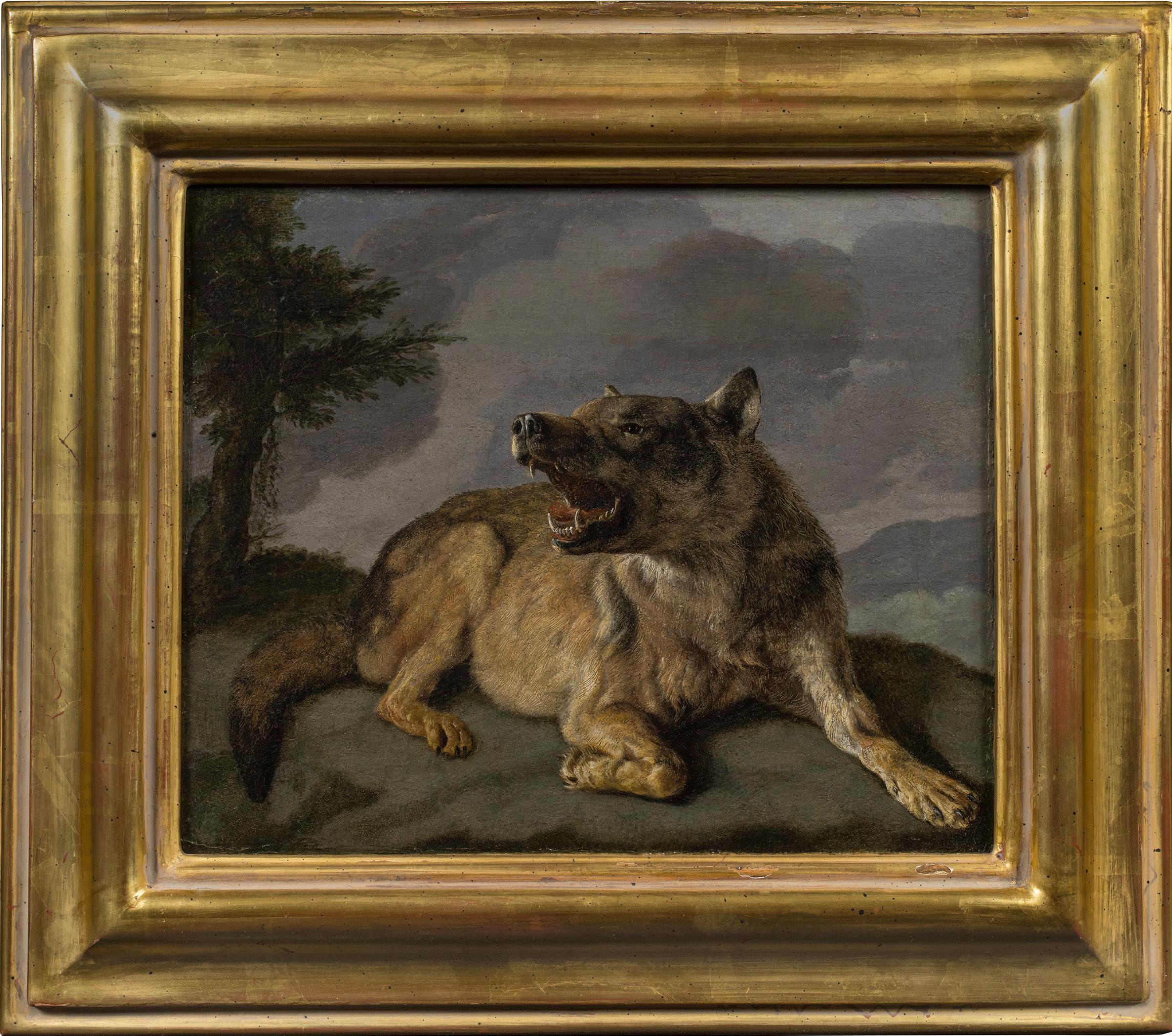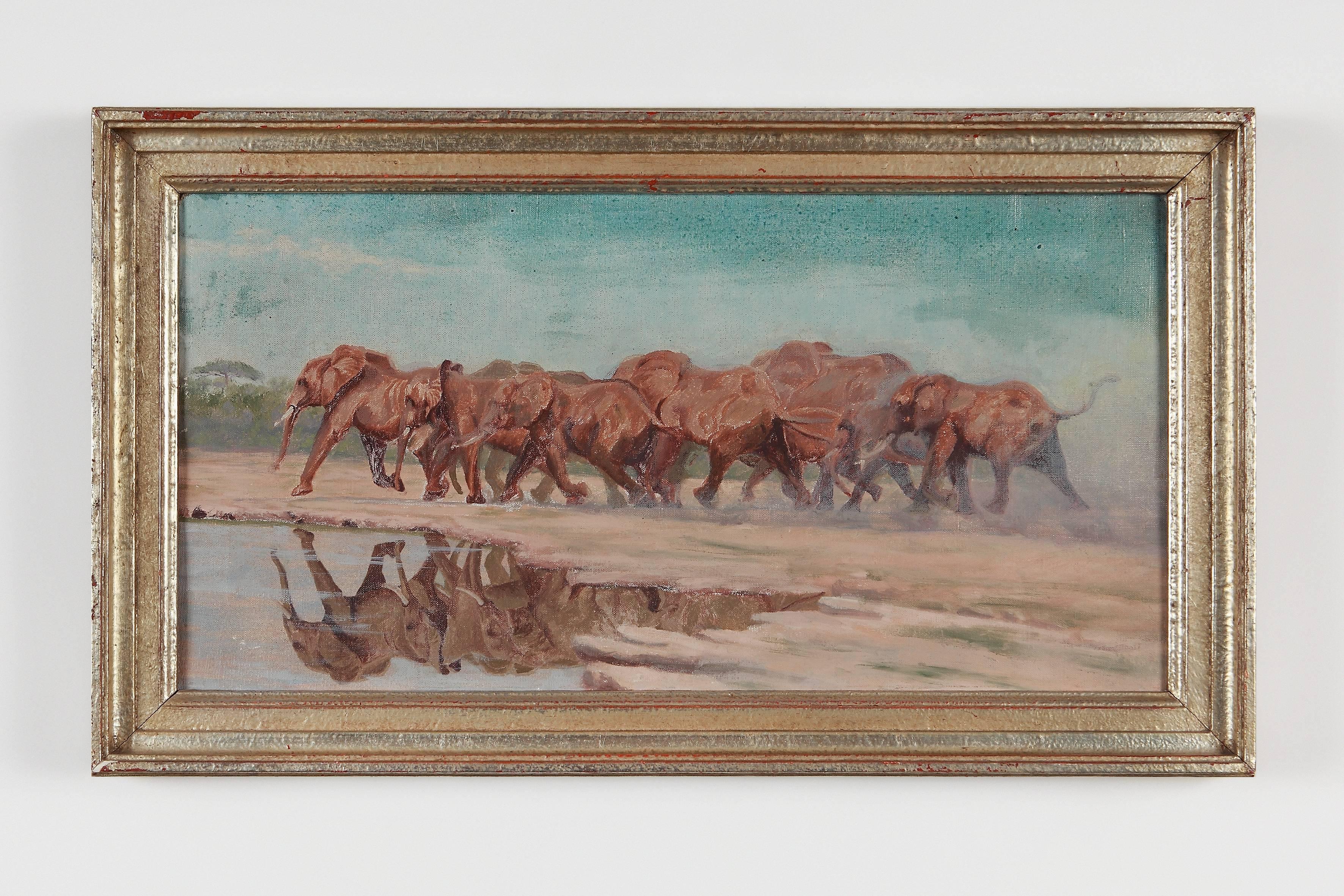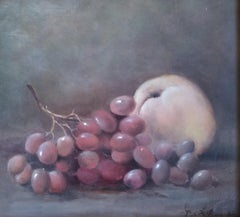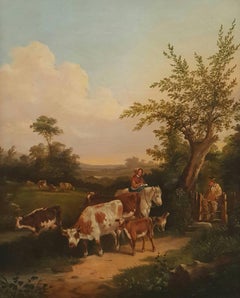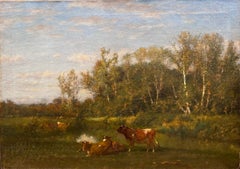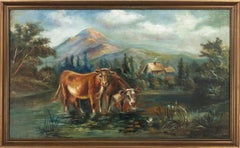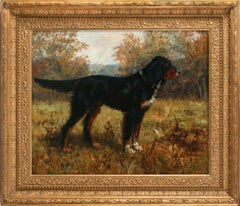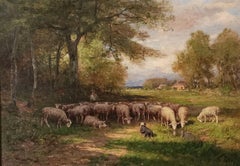
Guarding the Sheep
View Similar Items
Want more images or videos?
Request additional images or videos from the seller
1 of 7
Thomas Bigelow Craig Guarding the Sheep
About the Item
- Creator:Thomas Bigelow Craig (1849 - 1924, American)
- Dimensions:Height: 12.5 in (31.75 cm)Width: 17 in (43.18 cm)Depth: 3 in (7.62 cm)
- Medium:
- Movement & Style:
- Period:
- Condition:
- Gallery Location:Saratoga Springs, NY
- Reference Number:1stDibs: LU170211886032
About the Seller
4.2
Vetted Professional Seller
Every seller passes strict standards for authenticity and reliability
Established in 1992
1stDibs seller since 2015
30 sales on 1stDibs
Typical response time: 13 hours
Authenticity Guarantee
In the unlikely event there’s an issue with an item’s authenticity, contact us within 1 year for a full refund. DetailsMoney-Back Guarantee
If your item is not as described, is damaged in transit, or does not arrive, contact us within 7 days for a full refund. Details24-Hour Cancellation
You have a 24-hour grace period in which to reconsider your purchase, with no questions asked.Vetted Professional Sellers
Our world-class sellers must adhere to strict standards for service and quality, maintaining the integrity of our listings.Price-Match Guarantee
If you find that a seller listed the same item for a lower price elsewhere, we’ll match it.Trusted Global Delivery
Our best-in-class carrier network provides specialized shipping options worldwide, including custom delivery.More From This Seller
View AllSaratoga Horse Race
By Erik Johnsen
Located in Saratoga Springs, NY
Signed lower right.
His father nearly sold 5-year- old Erik Johnsen in 1965 for $600. What followed was a chaotic journey into beatings, sexual abuse and groundlessness. Moving cons...
Category
2010s Post-Impressionist Animal Paintings
Materials
Wood, Oil
Grapes and Peach
By George Cope
Located in Saratoga Springs, NY
Signed lower right & dated 1888.
Category
1880s Hudson River School Still-life Paintings
Materials
Canvas, Oil
High Peaks in the Adriondacks
By Charles H. Chapin
Located in Saratoga Springs, NY
Charles Henry Chapin - American (1830 - 1889)
“High Peaks of the Adirondacks”
Note: Peaks include Mount Marcy, Haystack Mountain, Basin Mountain, as viewed from the Ausable Lake Area...
Category
Late 19th Century Hudson River School Landscape Paintings
Materials
Canvas, Oil
A Summer Gathering
By Ambrose Andrews
Located in Saratoga Springs, NY
Signed lower right.
An itinerant portrait, miniature, and landscape painter, Ambrose Andrews had a wide-ranging career geographically that saw him in many regions including New York (1829-31), Connecticut (1837), Texas (1837-1841) and Louisiana (1841-42). After 1844, he was active in St. Louis, New York City, Buffalo, New York, Vermont and Canada. He was born in West Stockbridge, Massachusetts, and in 1824, attended the National Academy of Design.
Andrews exhibited paintings at the Republic of Texas Capitol...
Category
19th Century Hudson River School Landscape Paintings
Materials
Canvas, Oil
Distant Horizon
By Edward Moran
Located in Saratoga Springs, NY
Edward Moran (American, 1829 - 1901)
Boy with Dog on Dock
Oil on canvas
Signed lower left
22 x 36 inches
Provenance: Sotheby's Sale no. 3255 Oct. 27-28, 1977 Page 58
Price on reques...
Category
Late 19th Century Hudson River School Landscape Paintings
Materials
Canvas, Oil
Price Upon Request
Mount Washington, New Hampshire
By Edmund Darch Lewis
Located in Saratoga Springs, NY
Edmund Darch Lewis (1835-1910)
Mount Washington, New Hampshire
50 x 58 inches, signed & dated 1859
Description
The area near Mount Washington in New Hampshire was visited by many ...
Category
1850s Hudson River School Landscape Paintings
Materials
Canvas, Oil
Price Upon Request
You May Also Like
Antique American Hudson River School Oil Painting Cows Landscape Troy New York
Located in Portland, OR
A rather beautiful Hudson River landscape oil on canvas painting by the celebrated New York artist Charles Grant Beauregard (1856-1919), signed and dated 1898.
The painting depicts c...
Category
Late 19th Century Hudson River School Animal Paintings
Materials
Oil, Canvas
Pastoral Landscape titled "Cows Resting"
By James McDougal Hart
Located in Fredericksburg, VA
James McDougal Hart (1828-1901) was a prominent American landscape painter and a key figure in the Hudson River School. His landscapes are characterized by their serene and idyllic q...
Category
Late 18th Century Hudson River School Landscape Paintings
Materials
Canvas, Oil
Large Scale Early 20th Century Bucolic Mt. Hood Landscape Oil Painting
By William M. Lemos
Located in Soquel, CA
Gorgeous landscape with two cows drinking water in a pond with Mt. Hood in background by listed artist William M. Lemos (American, 1861-1942). Signed "W.M. Lemos" lower right. Presented in vintage gilt-toned frame that shows wear (included as-is). Condition: Good: previously owned and used, with little or no signs of wear and is in good condition. No structural issues. Image size: 29"H x 49"W.
Born in New York, Professor Lemos moved to San Francisco in 1887 where he established a studio at 106 Geary Street. He later moved to Santa Cruz in 1896, where he settled, painting murals for many local businessmen and the Santa Cruz Beach Boardwalk.
As a boy Lemos earned money by wandering the streets and painting on request. Arriving in San Francisco in 1887, he established a studio at 106 Geary. With his wife Mabel, he worked in Los Angeles for a few years in the 1890s. After settling in Santa Cruz in 1896, he painted murals for many local businessmen. When the original Beach Casino was built there at the Boardwalk in 1904, Lemos was the first concessionaire and worked there for nearly 40 years. On his platform in the Casino, Lemos did paintings of redwoods, still lifes, forest fires, beach scenes, and marines. Many of his oils were done on redwood slabs which were popular with the tourists; in the early days these paintings sold for one dollar and up depending on the size of the work. After his vision failed and he was unable to paint, his last years were mostly spent fishing off the Municipal Pier with a friend who baited his hook for him because he could no longer see. In the March 27, 1941 Santa Cruz Sentinel News Lemos reminisced, "Them were the days when the Boardwalk was only twelve feet long and when business got slow I picked up my shotgun and went across the street and shot ducks where the Casa del Rey Hotel now stands." Exhibited: Calif. State Fair, 1885; Mechanics' Inst. (SF), 1889. In: Santa Cruz City Museum; Wawona Hotel (Yosemite).
Edan Hughes, "Artists in California, 1786-1940"
His mother was Julia Lemos, a Chicago artist famous for her depiction of the Chicago fire, “Two of Julia’s children became successful artists. Her eldest son, William, was a naïve still life, landscape, and mural painter. As a young boy in New York, he would wander the streets, earning money for the family, by ‘painting on request.’ At age 26, William moved to San Francisco, California. He opened an art studio and kept it running until he moved to Santa Cruz with his wife, Mabel, in 1896. During this period, he worked as a fresco artist painting ‘murals for many local businessmen.’
Exhibited California State Fair, Sacramento, 32nd annual, per Sacramento Daily Union, September 9, 1885. and article goes on to say “William Lemos and wife, Sacramento – Art school exhibits in which are shown such a variety of designs in decorative art, flower painting, and ornamentation, that one must give time to the examination.”
Exhibited Mechanics Institute, San Francisco, 1889.
“Lemos and his wife were in Fresno California 1890...
Category
Early 20th Century Hudson River School Landscape Paintings
Materials
Canvas, Oil, Stretcher Bars
Gordon Setter in a Landscape by Otto Norquist (American: 1859-1906)
Located in New York, NY
Otto Norquist (1859-1906)
"Gordon Setter in a Landscape, 1890"
Oil on canvas
22 x 27 inches
Signed and dated 1890, lower right
Otto Norquist was born in...
Category
Late 19th Century Hudson River School Landscape Paintings
Materials
Oil, Canvas
"Interior of a Stable" William Hart, Hudson River School Antique, Boy and Horse
By William Hart
Located in New York, NY
William M. Hart (1823 - 1894)
Interior of a Stable
Oil on canvas
17 x 12 inches
Provenance
William Macbeth Gallery, New York
Mrs. Mabel Brady Garvan Collection
Christie's New York, Sporting Art, November 28, 1995, Lot 116
Ann Carter Stonesifer, Maryland
Estate of above
Brunk Auctions, Asheville, North Carolina, January 27 2018, Lot 777
Exhibited
New York, The Metropolitan Museum of Art, Life in America, April 24 - October 29, 1939, no. 123, illustrated.
New York, Macbeth Gallery, 1892: Sixtieth Anniversary Exhibition, April 1952, p. 5, no. 18.
Literature
Turner Reuter Jr, Animal and Sporting Artists in America, Middleburg, Virginia, 2008, p. 306.
Gary Stiles, William Hart: Catalogue Raisonné and Artistic Biography, no. 1126, illustrated.
It should be noted that the Francis Patrick Garvan and Mrs. Mabel Brady Garvan collection, of which this painting was a part of, was one of the foremost American Art collections and now makes up a large part of the Smithsonian American Art Museum and the Yale University Art Gallery collections.
Born in 1823 in Paisley, Scotland, William Hart emigrated with his parents to the United States at the age of nine and settled in Albany, New York. It was here that Hart first began his artistic training when he was placed under the tutelage of Messrs, Eaton & Gilbert, the prestigious coach-makers from Troy, New York. During this time, Hart learned how to decorate coach panels, covering them with either landscapes or figurative compositions. At the age of seventeen, he was eagerly contemplating an artist’s profession. Consequently, he left the mechanical trade of coach-making and began expanding his artistic pursuits to more refined endeavors.
Hart followed coach-making with decorating window shades and later developed an interest in portraiture. Around 1840, he established his first formal studio in his father’s woodshed in Troy. There, he created many likenesses of individuals, affording him a nominal income. Once, he remarked that he felt prouder over his first fee of five dollars for painting a head then for the larger sums he would command later in his career. Nevertheless, his wages from portraits during this early period proved insufficient. Thus, he expanded into landscape painting, allowing him to barter his works or sell them for modest prices.
In 1842, Hart moved to Michigan in an attempt to further his success; portraiture remained his primary means of support. Unfortunately, his experiences in the West were disappointing. Hart spent three years living a rough existence until he finally returned to Albany in 1845. Upon his return, he fully devoted himself to the art of landscape painting. Despite his failing health, he worked diligently to perfect his skill until 1849 when he traveled abroad to his native land of Scotland. This trip was made possible through the generosity of his patron and advisor, Dr. Ormsby of Albany. For three years, he studied in the open-air, creating brilliant sketches of the Scottish Highlands and the surrounding British Isles.
Returning to Albany once more in 1852, Hart enjoyed improved health and was reinvigorated with purpose. The following year, he moved to New York and opened a studio, promoting himself as a specialist in landscape painting. Hart became a regular contributor to the National Academy of Design. His works received a great deal of attention from artists and connoisseurs alike, all of whom praised him for his fresh, self-taught style. In 1855, he was designated as an associate of the National Academy of Design; three years later he was elected to Academician. In 1865, he was unanimously chosen to be the first president of the Brooklyn Academy of Design. It was during his tenure there that he delivered his famous lecture The Field and Easel, which emphasized the distinguishing principles of landscape art in America. Hart argued that landscape painters should express the “look of the place” being depicted.Critics during the 1870s noted his sensitive balance between capturing a strict “real” interpretation of nature and that of a more “ideal” sentimental tone. For instance, in 1869, Putnam Magazine noted that Hart brought back “exquisite studies” of the surrounding Tappan...
Category
19th Century Hudson River School Animal Paintings
Materials
Canvas, Oil
$60,000 Sale Price
20% Off
19th Century Hudson River School Bucolic Landscape
By John Frederick Kensett
Located in Soquel, CA
Beautiful example of the Hudson River School romantic bucolic New York autumn landscape with cows foraging. Illegible artist signature on stretcher bar (See enhanced images). Condition: very good; professionally cleaned and minor restoration upper right hand corner where paint was missing.
Unframed.
Image size: 14"H x 24"W x .75"D
Hudson River School was an informal association was America's first so-called school of painting and the dominant landscape style until the Civil War. The name derives from a group of 19th-century landscape painters working in New York state. With realistic composition, they depicted romantic views of unsettled areas of the Hudson River Valley especially lakes, rocky gorges, and forests in the Catskill Mountains. About a fourth of these artists utilized luminism or effects with special lighting techniques to convey lofty emotions through contrasts of light and dark. Included in this Hudson River luminist category were Washington Allston, Albert Bierstadt, William Hart, and Frederic Edwin Church...
Category
1870s Hudson River School Landscape Paintings
Materials
Linen, Oil
$2,400 Sale Price
20% Off
Recently Viewed
View AllMore Ways To Browse
Craig Thomas Paintings
Blue Rabbits
Fish Animals Nature
Orange Cat
Horse In Stable
Oil Paintings Animals Africa
Maine Woods Painting
19th Century Oil Painting Dog
Paintings Of Hounds
Antique Equestrian Art
Hawaiian Wood
English Dog Paintings
Small Dog Painting
Gold Butterfly Painting
Jungle Animal Art
Portrait Paintings Of Dogs
Rockford Painting
American Western Painting Animals

